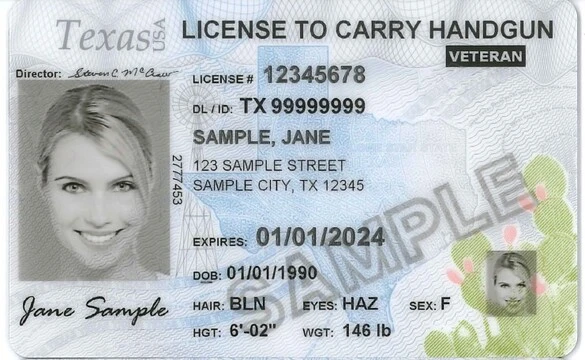The Texas License to Carry (LTC) Proficiency Test is an essential component for those seeking to legally carry a handgun in Texas. This guide provides a detailed overview of the proficiency test, describing the layout and scoring of the B-27 target, incorporating key information from leading sources to ensure a comprehensive understanding of the requirements, process, and best practices.
What is the Texas LTC Proficiency Test?
The Texas LTC Proficiency Test assesses an individual's ability to safely and accurately handle a handgun. The test includes both a written and a shooting component, although this guide focuses primarily on the shooting proficiency test. The test aims to ensure that applicants can effectively use a handgun in a manner that promotes safety and accuracy.
TX SB 263 2017 - Handgun Proficiency Legislation
Proficiency Test Requirements
- Handgun: Any legal pistol, with a minimum caliber of .22, can be used. The handgun must not have any laser optics or magnifying scopes.
- Ammunition: 50 rounds of ammunition are required for the test, but bringing 100-150 rounds is recommended for practice and re-testing.
- Safety Gear: Eye and ear protection are mandatory.
- Documentation: A current Texas Driver’s License and the LTC-101 or LTC-104 form (proof of class completion).
Proficiency Test Course of Fire
The shooting test is conducted at three distances against a B-27 target: 3 yards, 7 yards, and 15 yards. A total of 50 rounds are fired, and the scoring is based on accuracy and precision.
- 3 Yard Line – 20 Shots
- 1 shot in 2 seconds, 5 times
- 2 shots in 3 seconds, 5 times
- 5 shots in 10 seconds, once
- 7 Yard Line – 20 Shots
- 5 shots in 10 seconds, once
- 1 shot in 3 seconds, 5 times
- 2 shots in 4 seconds, once
- 3 shots in 6 seconds, once
- 5 shots in 15 seconds, once
- 15 Yard Line – 10 Shots
- 2 shots in 6 seconds, once
- 3 shots in 9 seconds, once
- 5 shots in 15 seconds, once
B-27 Scoring System
The LTC proficiency test is an essential hurdle for anyone looking to carry a firearm in Texas. To pass this test, you'll need to grasp the scoring system, which revolves around the B-27 target. This target is divided into scoring zones, with the highest point value assigned to the center and lower values assigned to the outer edges. The sections of the target, each worth specific points, are as follows:

Proficiency Test Scoring Zones
This target has been colorized to represent the scoring zones. Actual B-27 targets are a mostly one color.
- Inner Scoring Rings:
- 5 points: Shots within the X, 10, 9, and 8 rings; approximately 18" high by 12" wide
- Next Scoring Ring:
- 4 points: Shots within the 7 ring
- Outer Target Zone:
- 3 points: Shots on the silhouette but outside the scoring rings; outside the outer scoring ring
- Shots outside the silhouette outline (red area) do not count:
- 0 points
To pass the LTC proficiency test, applicants must hit a minimum of 175 out of 250 possible points using the B-27 scoring system (described above), which means they must hit the target with a minimum of 70% accuracy. This score is achievable with regular practice and by focusing on the fundamentals of shooting.
In the Texas License to Carry shooting proficiency test, achieving all 5-point hits at the 3 yard and 7 yard distances would earn a total of 200 points, which is 25 points more than the minimum passing score of 175 points. Proficiency at the shorter 5 and 7-yard distances may eliminate your need to stress the 15-yard shots!
Be sure to check out our B-27 Scoring Calculator and LTC Shot Timer! Taking extra time to practice both the timing and scoring will increase your chances of passing the first time!
Preparation Tips
- Understand Your Sights: Ensure you know how your handgun's sights work, especially at close ranges.
- Practice Consistency: Consistent practice at varying distances can improve your accuracy and confidence.
- Aim High: Aim for the high center chest area on the target to increase your margin for error.
- Get the Gun on Target Quickly: The faster you can get your gun aimed at the target, the more time you have to shoot accurately.
Importance of Regular Practice
Consistent practice is crucial in refining your shooting technique in preparation for your proficiency test. Tracking your progress helps identify areas needing improvement, while feedback from a trained instructor offers valuable insights to correct any errors. A modern training tool that allows practice any time is the laser target like iTarget and others.
Prioritizing Gun Safety
Lastly, never forget the importance of gun safety. Familiarize yourself with Texas gun laws, License to Carry requirements, and basic firearm safety rules. Responsible firearm use is essential in ensuring a safe environment for all.
In conclusion, passing the LTC proficiency test may seem daunting, but armed with the right knowledge and dedication to honing your skills, you'll find success within reach. Prioritize gun safety, practice regularly, and don't forget to have fun along the way!




